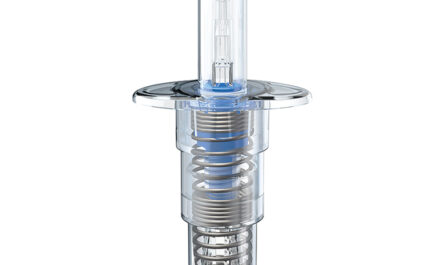
Introduction to Medical Aesthetics
Medical aesthetics refers to non-surgical cosmetic procedures performed by licensed healthcare professionals that aim to enhance one’s appearance. While cosmetic surgery achieves rejuvenation through surgical methods, medical aesthetics utilizes minimally invasive techniques like injections, laser treatments, and skin care therapies to smooth wrinkles, diminish scars and pigmentation issues, plump lips and skin, and more. Let’s take a deeper look into some key aspects of this evolving medical aesthetics market. Some of the most popular nonsurgical procedures available today include:
Botox and Dermal Fillers
One of the most widely known types of medical aesthetics is the use of injectable treatments like Botox and dermal fillers. Botox is a botulinum toxin that paralyzes muscles responsible for dynamic lines like frown lines when injected in tiny doses. This temporarily relaxes the muscles and reduces the appearance of wrinkles. Fillers like Juvederm or Restylane contain hyaluronic acid which adds volume back under the skin in areas like the lips, cheeks, and around the eyes. Both Botox and fillers require minimal downtime and deliver noticeable yet natural looking results.
Chemical Peels and Laser Skin Resurfacing
For addressing skin imperfections like age spots, acne scarring, or dullness, medical aesthetics providers commonly use chemical peels or laser resurfacing treatments. Chemical peels work by using solutions of acid that exfoliate the top layers of the skin. Depending on the strength, peels can reduce fine lines, brighten skin, and improve texture. Laser skin resurfacing utilizes highly concentrated light-based energy to tighten collagen and stimulates new collagen growth. Various laser modalities target different skin concerns for safe and effective rejuvenation.
Body Contouring with CoolSculpting
A popular nonsurgical option for body contouring is CoolSculpting, which utilizes controlled cooling to eliminate stubborn fat cells from areas like love handles, back fat rolls, and inner thighs. By drawing the fat cells into applicators that precisely cool them, Coolsculpting causes fat cell death without damaging surrounding tissues. Multiple treatments may be needed for significant fat reduction, but the procedure requires no needles, surgery, or downtime for most patients. CoolSculpting offers discrete body contouring without inherent risks of liposuction.
Hair Removal with IPL Photofacials
Unwanted hair on the face, legs, underarms or other parts of the body can negatively impact self-esteem and confidence. Laser hair removal and intense pulsed light (IPL) photofacials offer long-lasting or permanent reduction of hair growth using targeted light energy. Multiple treatments are usually needed for significant results, but these noninvasive technologies spare patients the rigors of waxing, shaving, or electrolysis. IPL light energy damages hair follicles to inhibit future growth while sparing surrounding skin.
What to Expect from a Medical Aesthetics Procedure
While medical aesthetics aims to make procedures as comfortable as possible, most will still involve some level of pain, which varies between treatments. Some redness, swelling or minor bruising around injection sites is normal, though advanced techniques and numbing agents help minimize discomfort. Post-procedure care is important for optimal results. This may involve icing injection sites, avoiding strenuous activity, and liberal application of moisturizer or sunscreen.
Most effects are immediately visible but continue to improve over 1-2 weeks as swelling subsides. Fillers and some skin treatments require touch-up visits to maintain effects for 6-12 months. Lasers and photofacials may require multiple sessions at 6 week intervals for maximum benefit. While downtime is minimal compared to surgery, patients should plan procedures on days with flexibility as some treatments can cause temporary bruising, tingling or redness. With proper preparation and post-care, medical aesthetics delivers aesthetic improvements through gentle, minimally invasive means.
Financial Considerations of Medical Aesthetics
One of the major appeals of medical aesthetics is its affordability relative to surgical procedures. Costs vary between different treatments but injectables like Botox and fillers range from a few hundred to a few thousand dollars depending on the area and amount used. Series of laser or IPL treatments are also several hundred dollars each, with multi-treatment packages providing savings. Coolsculpting costs average around $700-1000 per area treated.
While not covered by most insurance plans as they are considered elective treatments, financing options or membership programs are often available from medical spas and dermatology offices. Membership packages provide substantial discounts, while a financed solution allows treatments to be paid off in installments. Product vendors also frequently run promotions offering additional monies off when combining different procedures that work synergistically. On an overall level, medical aesthetics makes looking youthful and refreshed an achievable goal for most budgets when spacing procedures appropriately.
Choosing a Qualified Medical Aesthetics Provider
Given the complexity of different treatment options and inherent risks, it’s critical patients seek medical aesthetics services from a board-certified physician. Dermatologists, plastic surgeons, and certain nurse practitioners have comprehensive training in both surgical and non-surgical aesthetic techniques. They understand facial anatomy, can properly diagnose skin concerns, customize treatment plans, and manage any potential side effects.
When selecting a provider, check if they are licensed by their state medical board. Look for before and after photos of actual patients to assess artistic abilities. Consultations allow evaluation of a provider’s communication skills, sanitary practices, and willingness to discuss appropriate expectations. Reputable practices are also accredited by third-party organizations ensuring optimal safety standards. While medical spas offer some benefits, higher-risk treatments like lasers or injectables demand a credentialed expert’s medical oversight for best outcomes and peace of mind.
In Summary
The global medical aesthetics market has witnessed tremendous growth over the past decade. When performed skillfully by a qualified medical provider, aesthetics procedures empower personal transformation through gentle, targeted means. While surgical rejuvenation certainly has life-changing potential, more conservative individuals seeking discrete improvements find much to gain from today’s robust offerings of medical aesthetics. No longer are radical changes necessary to achieve a fresher, revitalized appearance. By combining expertise with the latest advancements, medical aesthetics restores confidence from within in a refreshingly minimally invasive manner.


